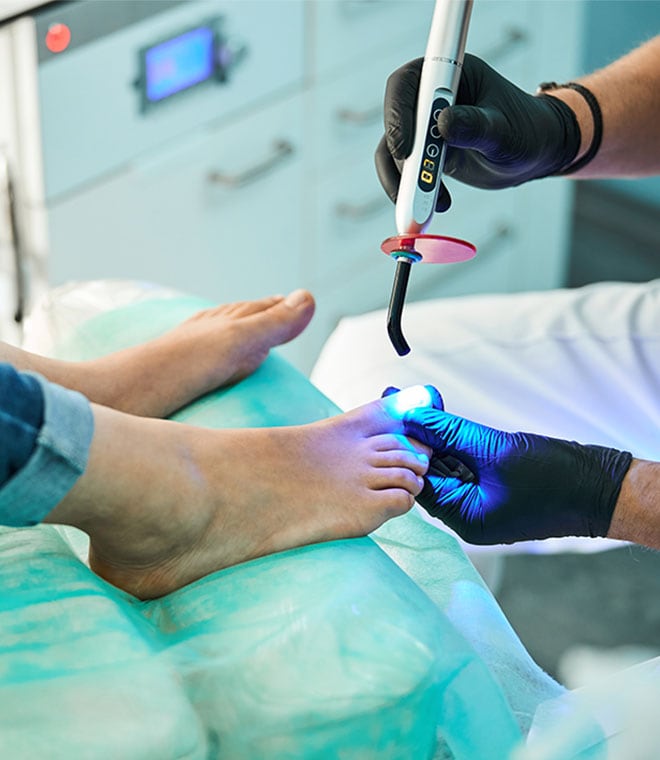Health
Nail mold vs. fungus: What's the difference?
By Anna H. Chacon, MD, Fellow of the American Academy of Dermatology Oct 22, 2024 • 3 min
Fungal nail infections most often occur on the toenails, although they can affect the fingernails, too. Fungal infections of the toenails can be unsightly, but in most cases, they’re not harmful. Known as onychomycosis, fungal nail infections are caused by a variety of fungi, including molds and yeasts. Here we look at the different types of fungal nail infections.
Dermatophyte nail infections
Dermatophytes are the main cause of fungal nail infections. These microscopic, parasitic fungi require moisture and keratin—the protein that makes up your hair, skin and nails—to survive. When dermatophytes invade the skin under the toenail, they multiply and degrade the nail, causing visibly discolored, thickened and brittle nails.
Yeast and nondermatophyte mold nail infections
Yeast and nondermatophyte mold are types of fungus that may be the culprit in some fungal nail infections, although these appear to be relatively rare.
A rare, mold-related nail infection known as fungal melanonychia is caused by molds that produce melanin, or skin pigments. The resulting infection causes discolorations on the nail plate that can range from brown to black. These discolored areas may look like subungual melanoma, a skin cancer that may occur on the nail beds. Therefore, you should have this symptom evaluated by a healthcare provider.
How do you know which fungus is causing a nail infection?
It can be hard to tell what type of fungus is causing a nail infection unless your healthcare provider examines the nail or tests it for different organisms. The majority of fungal toenail infections are caused by dermatophyte fungi. These types of infections may be treated with prescription oral antifungal medication, which are the most effective treatment for nail fungus. There are also over-the-counter antifungal topical medications available to try, but they may not be as effective.
People who have darker skin tones should see their healthcare provider if they notice dark spots on their nails, as they may be at a higher risk for subungual melanoma, and early diagnosis improves outcomes. If you have toenail fungus, treatment will help prevent it from spreading to other nails and other people. However, treating nail fungal infections can be a slow process, and it can take several months to see improvement.
Updated by Julie McDaniel, MSN, RN, CRNI, October 2024.



